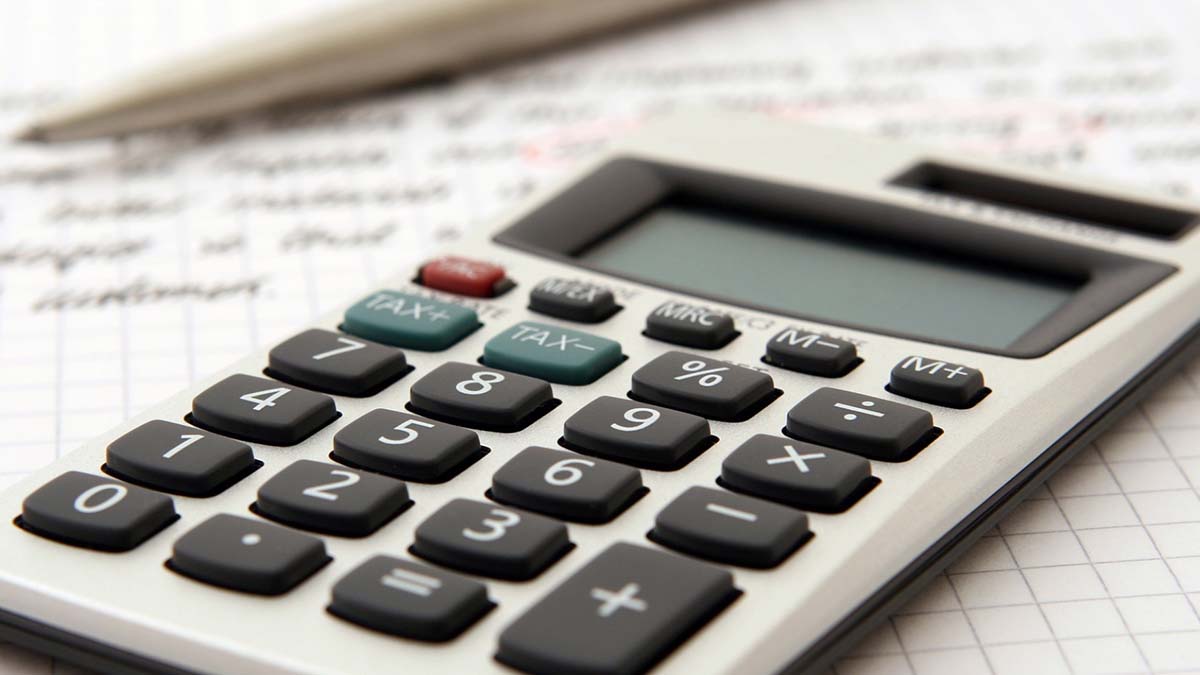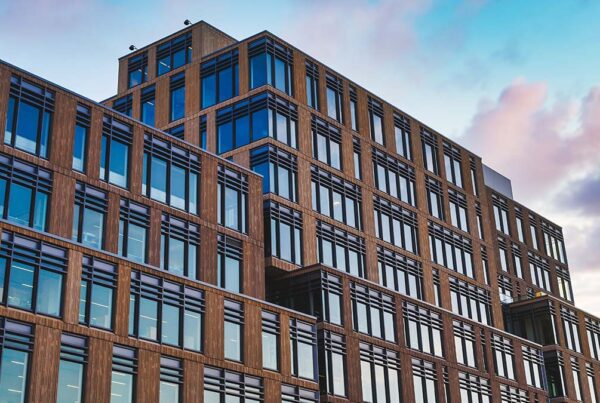
Like many real estate investing definitions, depreciation can raise many questions for new investors.
In this article, we cover everything you need to know to gain a clear foundational understanding of depreciation and how it can impact commercial real estate investing.
What is Commercial Real Estate Depreciation?
Depreciation in commercial real estate refers to the reduction in the monetary worth of a building—or improvement to a building—over time due to wear and tear, frequent usage, and obsolescence. It is an accounting practice that deducts a portion of the asset cost every year throughout the asset’s useful life rather than deducting the full cost of an asset in year one.
As you may be able to guess, using depreciation intelligently on commercial real estate creates a substantial tax benefit from year to year. Similar to how typical corporate tax deductions operate, the Internal Revenue Service (IRS) allows qualifying owners of commercial real estate to reduce their tax bill by depreciating the value of their property—including qualifying improvements and repairs—in equal installments over the “useful life” of the asset or improvement/repair.
For most commercial real estate investors, depreciation has such an impact on the financials that it can almost be as important as the cash flow and possible growth in market value that a property generates.
How Do You Calculate Depreciation in Commercial Real Estate?
There are two main methods that are commonly used to calculate depreciation for commercial real estate: the Straight Line method and the Declining Balance method. Your goals as an investor will help determine which method to use, but you can only use one method at a time for each property.
The Two Main Methods of Calculating Depreciation
Let’s review the two most common methods that are used in the calculation of depreciation in commercial real estate.
The Straight Line Method of Depreciation
The Straight Line method of depreciation is likely the most common method used to depreciate assets in commercial real estate. Using this method, depreciation is calculated by taking the total cost of the asset and dividing it by the number of years in its useful life. The result is an amount that you can deduct annually for the total number of years in the asset’s useful life.
Straight Line Depreciation Formula
The straight line depreciation formula for commercial real estate is:
Annual Depreciation Expense = (Cost of the Asset – Salvage Value) / Useful Life of the Asset
Where:
Cost of the Asset is the purchase price of the asset
Salvage Value is the reasonably estimated value of the asset at the end of its useful life
Useful Life of Asset is the number of years in which the asset is reasonably expected to be used
How to Calculate Straight Line Depreciation
To calculate depreciation using the Straight Line method, use the following steps:
- Take the cost of the asset.
- Determine the salvage value of the asset.
- Subtract the salvage value of the asset from the cost of the asset (this provides you with the total depreciable amount).
- Determine the useful life of the asset.
- Divide the sum of Step 3 by the final number from Step 4 (this provides you with the annual depreciation amount).
An Example of Straight Line Depreciation in Commercial Real Estate
Let’s say you own a 10-unit multifamily building and the boiler breaks so you pay $20,000 for a new boiler that has a useful life of 10 years. To calculate the depreciation of the boiler using the Straight Line method, you:
- Take the cost of the asset ($20,000)
- Determine the salvage value of the asset ($5,000)
- Subtract the salvage value of the asset ($5,000) from the cost of the asset ($20,000) which provides you with the total depreciable amount ($15,000)
- Determine the useful life of the asset (20 years)
- Divide the sum of Step 3 ($15,000) by the final number from Step 4 (20 years) which provides you with the annual depreciation amount for the boiler ($750/yr)
Therefore, in this example, you would depreciate the boiler in the amount of $750 annually for 20 years. In formula form, it would look like this:
($20,000 – $5,000) / 20 Years = $750/yr
This method is simple to calculate and understand, and if you plan to buy and hold a property for a long period of time, it can be a great way to reduce your tax liability consistently. However, if you don’t plan to hold the property for a long time, you may be leaving money on the table, which is where the Declining Balance method can be extremely helpful.
The Declining Balance Method of Depreciation
The Declining Balance method of depreciation (also referred to as the reducing balance method) is based on the notion that assets decline at a faster pace in their earlier years than in later years. This method creates accelerated depreciation and higher depreciation values in the first few years of an asset’s life compared to the later years.
Declining Balance Depreciation Formula
Declining Balance Method = (Cost of the Asset – Salvage Value) * Rate of Depreciation (in %)
Where:
Cost of the Asset is the purchase price of the asset
Salvage Value is the reasonably estimated value of the asset at the end of its useful life
Rate of Depreciation is the percentage rate at which an asset is depreciated across the estimated productive life of the asset. This is calculated by dividing 1 by the useful life of the asset. In formula form, Depreciation Rate Per Year = 1 / Useful Life of the Asset.
How to Calculate Declining Balance Depreciation
To calculate depreciation using the Declining Balance method, use the following steps:
Part A: Identify Rate of Depreciation
- Identify the useful life of the asset (number of years)
- Divide 1 by the number of years of the useful life (this provides you with the rate of depreciation as a percentage)
Part B: Calculate Declining Balance Depreciation Amount
- Take the cost of the asset.
- Determine the salvage value of the asset.
- Subtract the salvage value of the asset from the cost of the asset (this provides you with the Total Depreciable Amount).
- Multiply the Total Depreciable Amount by the Rate of Depreciation
An Example of Declining Balance Depreciation in Commercial Real Estate
To highlight the difference between methods, let’s use the same example we used above for the Straight Line method; Let’s say you own a 10-unit multifamily building and the boiler breaks so you pay $20,000 for a new boiler which has a useful life of 20 years. To calculate the depreciation of the boiler using the Declining Balance Depreciation method, you:
Part A: Identify Rate of Depreciation
- Identify the useful life of the asset (20 years)
- Divide 1 by the number of years of the useful life (1/20 = 0.2 or 20%) which is the rate of depreciation
Part B: Calculate Declining Balance Depreciation Amount
- Take the cost of the asset ($20,000)
- Determine the salvage value of the asset ($5,000)
- Subtract the salvage value of the asset ($5,000) from the cost of the asset ($20,000) which provides you with the total depreciable amount ($15,000)
- Multiply the Total Depreciable Amount ($15,000) by the Rate of Depreciation (0.2) which equals the depreciation amount of the year ($3,000).
Therefore, in this example, you would depreciate the boiler at the amount of $3,000 for the first year. In formula form, it would look like this:
($20,000 – $5,000) * 0.1 = $3,000
Now, the big difference between the Straight Line method and the Declining Balance method is that you must run the Declining Balance each year using the asset’s ending balance of the former year. To demonstrate, here is what the first five years of the boiler depreciation would look like using the Declining Balance method.
| Year | Depreciation (%) and Starting Value | Depreciation Amount | Value at the end of the year |
| 1 | (20%) $15,000 | $3,000 | $12,000 |
| 2 | (20%) $12,000 | $2,400 | $9,600 |
| 3 | (20%) $9,600 | $1,920 | $7,680 |
| 4 | (20%) $7,680 | $1,536 | $6,144 |
| 5 | (20%) $6,144 | $1,228 | $4,916 |
As you can see, each year the boiler depreciates 20% from the value of the previous year, and it would do this for the useful life of the boiler. As a result, the Declining Balance method results in higher depreciation during the earlier years of the boiler’s life and a much lower depreciation during the later years of the boiler’s life. This is why the Declining Balance method isn’t always great for a buy-and-hold property, but can be a fantastic option for a property you only plan to hold for 3–5 years.
Recapture of Depreciation
When an asset is sold, any depreciation incurred on the item must be “recaptured” and included in the sale’s taxable gain. The amount of depreciation recapture equals the difference between the asset’s sales price and its tax base.
The tax basis of an asset is its original cost, plus any capital improvements that have been made, minus any depreciation that has been taken.
For example, if you purchased a building for $1,500,000, added value by making $350,000 in capital improvements, and then took $450,000 in depreciation deductions over a few years, the tax basis of the property would be $1,400,000 ($1,500,000 + $350,000 – $450,000).
If you sold the property for $2,200,000, you would have a taxable gain of $800,000 ($2,200,000 – $1,400,000).
Of the $800,000 taxable gain, $450,000 would be categorized as recaptured depreciation and taxed at your marginal tax rate. The remaining $350,000 would be categorized as a long-term capital gain and taxed at a lower rate since you held the property for more than one year.
As a result, before buying and selling any asset, it is critical to work with your CPA and evaluate the tax ramifications.
Benefits of Commercial Real Estate Depreciation
Since depreciation applies to the building itself (in addition to qualifying capital improvements), commercial real estate depreciation helps improve cash flow by functioning as a ‘tax shelter’ and lowering your taxable income during the holding period of the property.
For example, if you purchase a $1M property and use the Straight Line method of depreciation over 39 years, you would receive an annual depreciation deduction of $25,641. If the building generated $225,000 of revenue throughout the year, the Straight Line method of depreciation reduces that to $199,359.
This is a fantastic benefit by itself, but there’s more!
Not only has your taxable income been reduced, but if this was your only income for the year, your tax bracket was also reduced from 32% to 24%. This means your income tax liability decreased dramatically from $72,000 ($225,000 income x 32%) down to $47,846!
Unlike building depreciation being recaptured at the point of sale, reductions in personal income taxes due to depreciation are not recaptured. Therefore, the more you can reduce your personal income via depreciation, the more permanent tax savings you’ll receive.
Since the depreciation expense deduction is per property rather than per investor, it’s possible for active commercial real estate investors to accumulate depreciation deductions that fully reduce their taxable income to $0.
What Property Can Be Depreciated?
According to the IRS, you can depreciate “most types of tangible property.”
This includes most buildings in and of themselves, most capital improvements to those buildings, as well as the machinery, vehicles, furniture, and equipment needed to operate the building as a business.
The IRS states that for a property to be depreciable, it must meet all the following requirements:
- It must be property you own.
- It must be used in your business or income-producing activity.
- It must have a determinable useful life.
- It must be expected to last more than 1 year.
For more information on whether or not a property can be depreciated, read Publication 946 (2021), How To Depreciate Property from the IRS and consult with your tax professionals.
What Property Cannot Be Depreciated?
In Publication 946, the IRS states that land and certain excepted property cannot be depreciated.
The IRS says, “you cannot depreciate the cost of land because land does not wear out, become obsolete, or get used up. The cost of land generally includes the cost of clearing, grading, planting, and landscaping.”
Although you cannot depreciate land, you can depreciate certain land preparation costs (such as landscaping costs) needed to prepare land for business use. These costs must be so closely associated with the depreciable property that they also have a useful life that is highly correlated with the life of the associated property.
As an example, let’s say you purchased a piece of land and built a new office building. After the office building was complete, you paid for grading, clearing, irrigation, seeding, and plants. Some of the plants were planted right next to the building, whereas others were planted around the perimiter of the lot. If you ever replaced the building, you would need to remove the plants right next to it. In this instance, these plants are so closely associated with the building that they have a determinable useful life. As a result, you should be able to depreciate them.
How Does a Property Become “Fully Depreciated?”
A fully depreciated asset is an asset that has reached the end of its useful life and its only remaining worth is its salvage value. Unless disposed of, a fully depreciated asset on a company’s balance sheet will remain at its salvage value each year following its usable life.
What is a “Depreciation Schedule”?
A depreciation schedule outlines the value of each asset as it depreciates over time. A typical depreciation schedule includes the following information: property description, cost, expected life, depreciation method, date acquired, current and cumulative depreciation, and net book value.
Is it Just Real Estate that Can Be Depreciated?
No, capital expenditures (CAPEX) can be depreciated alongside the building itself. CAPEX includes costs such as appliances, furnaces, windows, roofs, maintenance equipment, and some landscape costs.
Key Takeaways for Commercial Real Estate Depreciation
Commercial real estate depreciation allows investors to deduct the cost of income-producing property over time, reduce the amount of personal income tax paid, and even roll over or delay capital gains tax when the property is sold. Because depreciation is an incredibly powerful tool for investors, it is important to think through a depreciation strategy when evaluating a property and consult with expert counsel.



